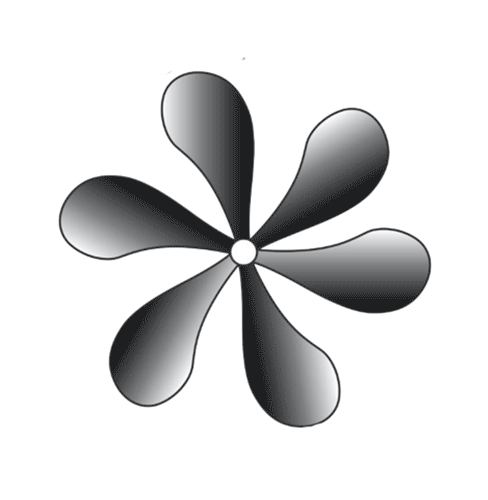7 Signs Your Building's HVAC System May Have Mold — and When to Call in the Pros
- Zach Spoor
- Sep 11
- 4 min read
A clean, efficient HVAC system is the backbone of a healthy workplace. When mold infiltrates ductwork or equipment, it can compromise air quality, trigger health issues, and hurt employee productivity. Given the humid climate in the DC Metro area, proactively monitoring for mold is critical to the health of your tenants and residents.
For businesses across Virginia, D.C., and Maryland, Advanced Building Services, Inc. (ABSI) provides the expertise to detect, prevent, and remediate HVAC mold problems.
Let's look at the key warning signs of mold that every facility manager should know.
7 warning signs that your HVAC System may have mold
Here are the most common mold warning signs our technicians and building engineers see:
1. Musty or Earthy Odors
If you notice a damp, musty smell when the HVAC system cycles on, that’s often the first warning sign of mold.
These odors come from gases released as mold colonies grow and metabolize organic matter. Over time, the smell can spread throughout the facility, affecting common spaces and individual offices alike. Employees may complain about the odor, or it may be strongest when the system starts up after being idle.
Ignoring these odors allows mold to expand and makes remediation more difficult and expensive.
2. Visible Mold Growth or Discoloration
Mold can appear as black, green, white, or gray patches inside vents, around filters, or on duct surfaces. Growth often looks fuzzy or slimy, and discoloration may spread across nearby walls or ceilings. Even small spots of visible mold indicate a much larger problem inside hidden ductwork.
Spores released from these colonies can circulate through the entire building, reducing indoor air quality and exposing occupants to health risks. Visible growth almost always warrants professional inspection and cleaning.
3. Recurring Health Symptoms
When employees report headaches, fatigue, congestion, or allergy-like symptoms that worsen at work, mold may be circulating in your HVAC system. These symptoms often improve when people leave the building, a strong sign of poor indoor air quality.
Over time, mold exposure can contribute to chronic respiratory issues, lost productivity, and higher absenteeism. Facilities that ignore these complaints risk not only employee health but also potential liability concerns. If symptoms persist across multiple occupants, an HVAC inspection is critical.
4. Black Dust or Residue Around Vents
Unusual black dust, specks, or residue around air vents can indicate mold growth deep within ducts. This buildup may look like soot or dirt, but if it returns quickly after cleaning, mold is a likely culprit.
The residue often results from spores and microbial debris being carried through the system. Left unaddressed, this contamination spreads further, depositing on furniture and work surfaces.
Consistent black dust is a clear warning that your HVAC system needs professional evaluation.
5. Condensation, Leaks, or Excess Moisture
Moisture is the fuel mold needs to grow. Signs include condensation on ducts, leaks near air handlers, or pooled water around HVAC units. Poor insulation or damaged seals can allow warm air to meet cold surfaces, creating the perfect breeding ground for mold. Standing water inside drain pans or beneath cooling towers can also accelerate colony formation.
Since mold can establish itself within 24–48 hours of moisture exposure, these conditions should be addressed immediately.
6. Poor Airflow or Inconsistent Comfort
Blocked airflow from mold, dust, or other debris can reduce comfort and efficiency.
Occupants may notice that some areas of the building feel hotter, colder, or more humid than others. Reduced airflow can also force equipment to work harder, increasing wear and tear. Inconsistent comfort across different zones is often a symptom of clogged ducts or contaminated components.
Professional inspection and cleaning can restore balance and ensure even temperature control.
7. Rising Energy Bills or Frequent Repairs
When commercial HVAC systems are dirty or obstructed, they require more energy to deliver heating or cooling. This inefficiency often shows up as steadily rising energy bills despite similar usage. Frequent repairs, such as replacing motors, belts, or coils, may also signal deeper problems linked to mold or contamination.
Over time, the additional strain on equipment shortens its lifespan, adding capital costs to operating expenses. Addressing mold and keeping systems clean is an investment that saves money in the long run.
Pro Tips for Preventing HVAC Mold
Once mold is established, you typically need to call an HVAC professional to remediate the issue. However, there are a handful of simple maintenance items you can do to help reduce the risk of mold occurrence:
Replace filters regularly: Dirty filters restrict airflow and feed mold.
Control humidity: Keep indoor humidity between 40–60% to limit growth.
Address leaks quickly: Mold can develop within 24–48 hours after moisture appears, so fix any leaks ASAP.
Schedule duct cleaning: Professional duct cleaning every few years reduces buildup.
Upgrade filtration: HEPA filters and UV lights add an extra layer of protection.
When to Call ABSI
Don’t wait until symptoms escalate to deal with mold in your building. Contact ABSI if you notice:
Musty odors, visible mold, or employee health complaints.
Reduced airflow or higher energy bills.
Water damage or leaks affecting HVAC equipment.
The need for routine preventive maintenance.
In addition to mold remediation, we also offer preventive maintenance contracts keep your HVAC system running efficiently and stop mold before it disrupts your workplace.

%20copy.png)